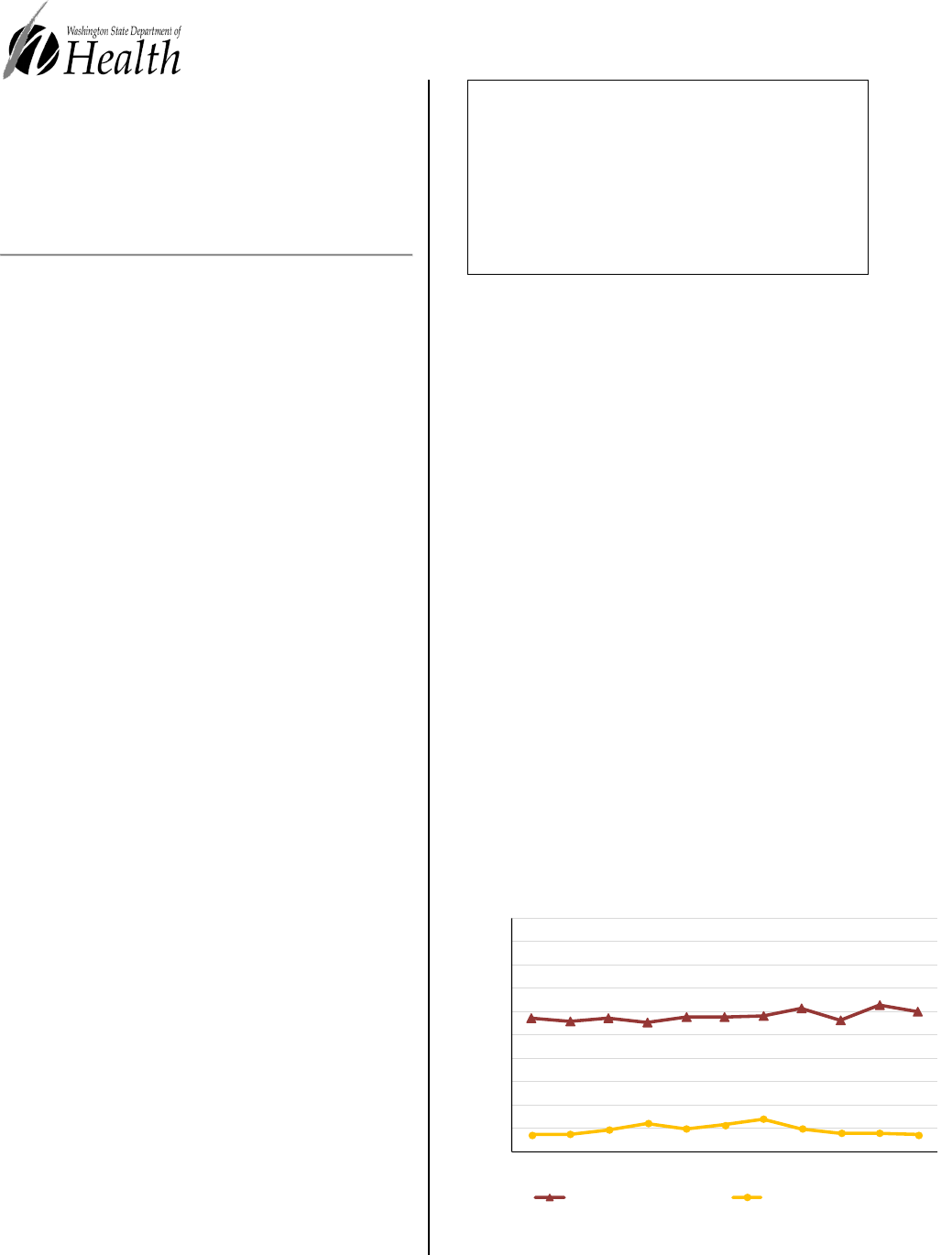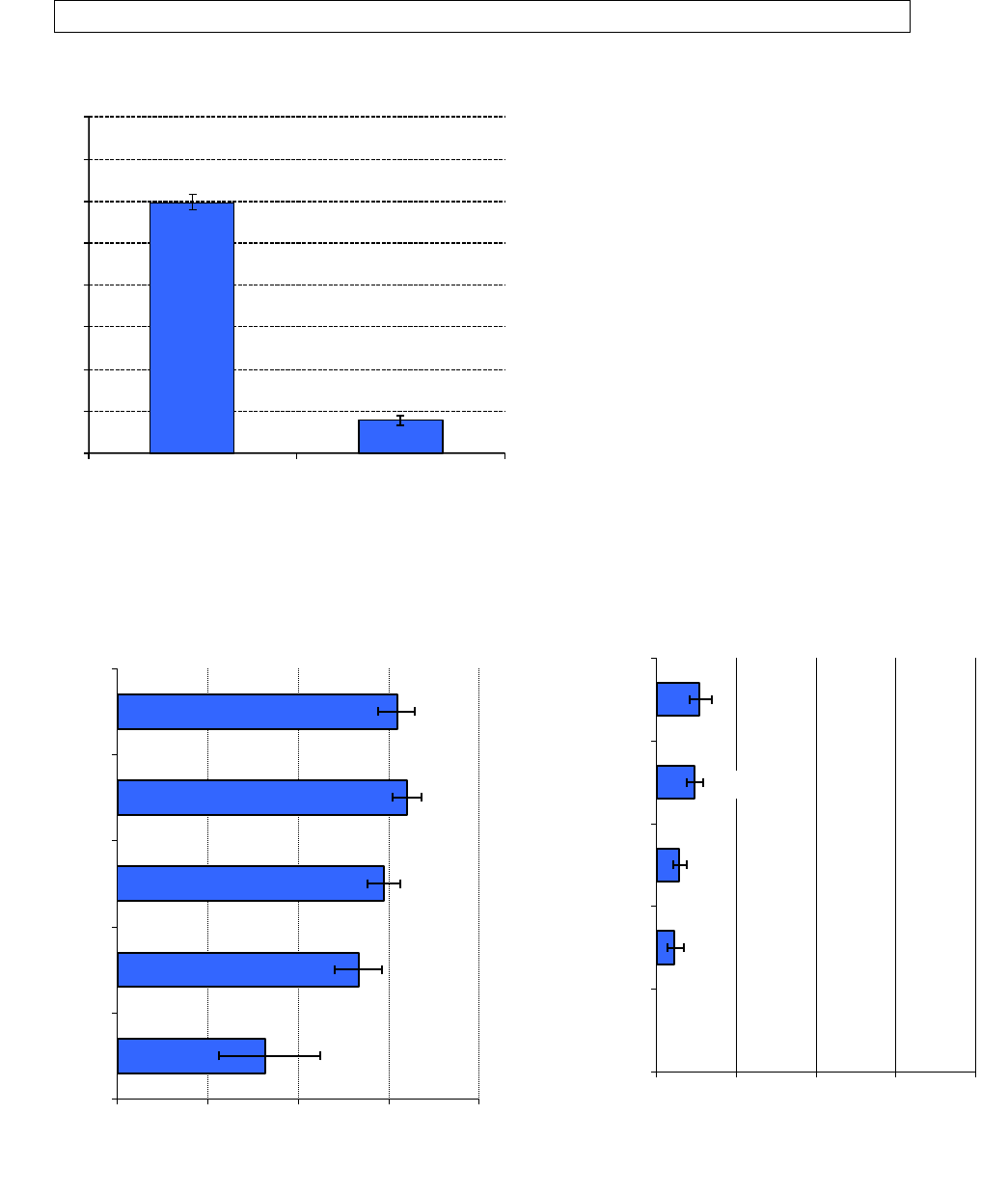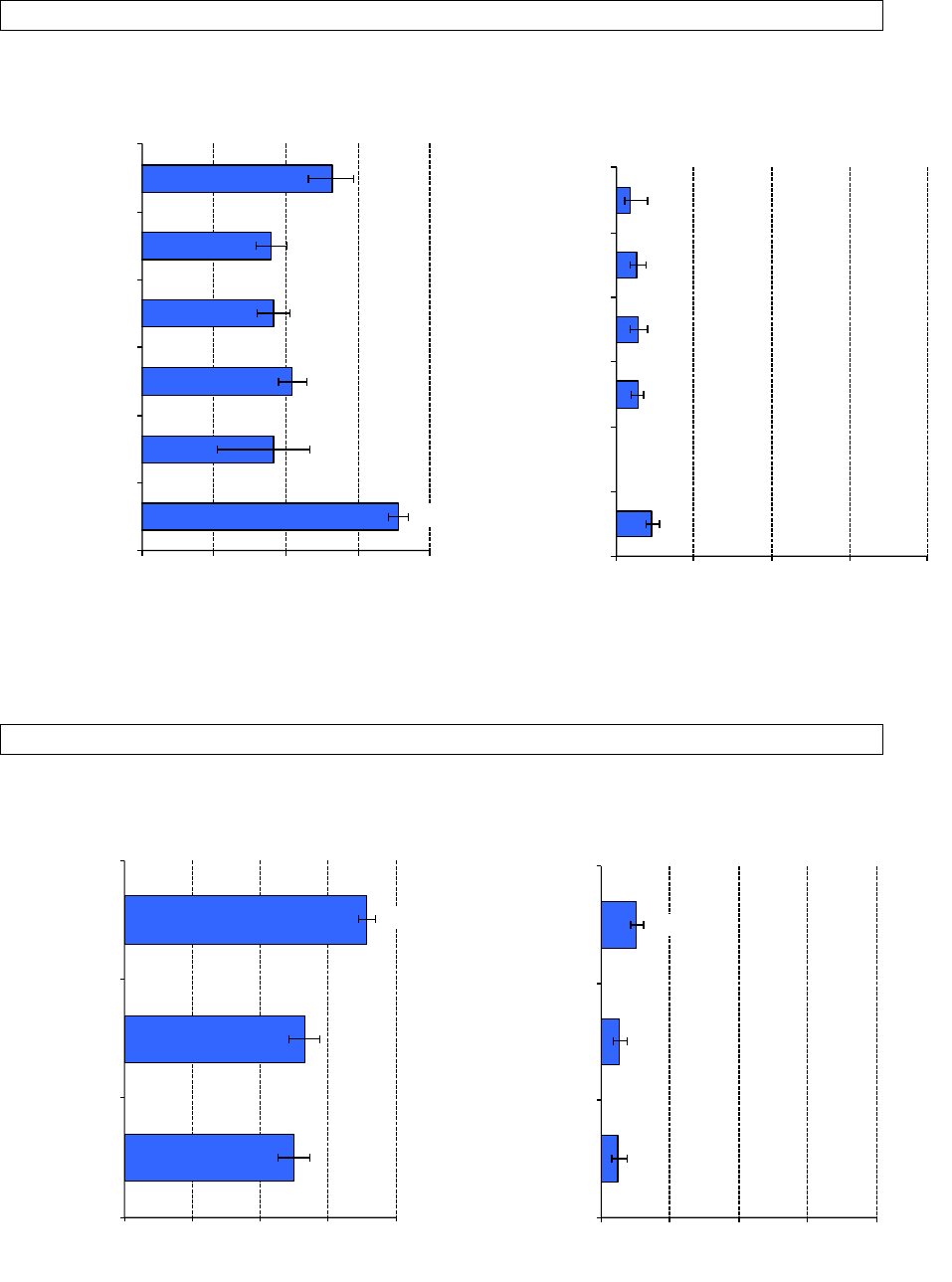
MCH Data Report DOH Pub No. 160-015 October 2022
Alcohol Use Before
and During
Pregnancy
Key Findings
Prenatal alcohol exposure can lead to birth
defects and developmental disabilities.
Embryos and fetuses exposed to alcohol
can develop fetal alcohol spectrum
disorders, encompassing a wide range of
conditions which range from subtle to
severe with both physical and mental
effects. There is no safe amount of alcohol,
nor safe time, that an individual can drink
while pregnant.
1
From 2017-2019, about 60 percent of
birthing persons reported drinking alcohol
during the three months before becoming
pregnant.
2
Many people discontinue drinking while
pregnant, with only 7.4 percent of pregnant
people reporting drinking alcohol during
their last three months of pregnancy.
Washington is meeting the Healthy People
2030 objective of at least 92.2 percent of
pregnant individuals to abstain from
alcohol during pregnancy.
2,3
Definition: Alcohol use is defined as any drink of
alcohol during the time in question. These data are
from the Pregnancy Risk Assessment Monitoring
System (PRAMS) based on the average number of
alcoholic drinks per week during the three months
before an individual became pregnant and during
her third trimester of pregnancy. Data presented in
this report are from 2017-2019, unless otherwise
stated.
Non-Hispanic White and non-Hispanic
Native American people reported higher
drinking rates before pregnancy than
people of other races/ethnicities, however
non-Hispanic Native American people
reported a similar rate of drinking to other
non-White people during the third
trimester.
2
Individuals receiving any Medicaid
reported lower drinking rates before
pregnancy and during the third trimester
than those who didn’t receive any
Medicaid.
2,4
There were too few people who were either
under 20 years of age or non-Hispanic
Pacific Islander to accurately report
estimates of drinking in the last three
months of pregnancy.
2
These individuals’
data are not shown in graphs and
visualizations below.
Alcohol Use Before and During Pregnancy
by Year. 2009-2019
5
57
60
7
7
0
10
20
30
40
50
60
70
80
90
100
2009 2010
2011
2012
2013
2014
2015 2016 2017 2018 2019
Percent
Drink Before Pregnancy Drink During Pregnancy

MCH Data Report DOH Pub No. 160-015 October 2022
Alcohol Use Before and During Pregnancy Overall and by Maternal Age
Alcohol Use Before and During Pregnancy, 2017-2019
2
Alcohol Use in 3 Months Prior to Pregnancy
By Maternal Age, 2017-2019
2
Alcohol Use in Last 3 Months of Pregnancy
By Maternal Age, 2017-2019
2
†Data for women < 20 not shown due to the relative standard error
being > 30 percent.
60
8
0
10
20
30
40
50
60
70
80
Alcohol use before
pregnancy
Alcohol use last 3 months of
pregnancy
Percent
33
53
59
64
62
0 20 40 60 80
< 20
20-24
25-29
30-34
35+
Percent
Years
5
6
10
11
0 20 40 60 80
< 20 †
20-24
25-29
30-34
35+
Percent
Years

MCH Data Report DOH Pub No. 160-015 October 2022
Alcohol Use Before and During Pregnancy by Race and Ethnicity
Alcohol Use in 3 Months Prior to Pregnancy
By Maternal Race/Ethnicity, 2017-2019
2
Alcohol Use in Last 3 Months of Pregnancy
By Maternal Race/Ethnicity, 2017-2019
2
† Data not shown for Pacific Islander women not shown due to the relative standard
error being >30 percent.
Alcohol Use Before and During Pregnancy by Medicaid Status
Alcohol Use in 3 Months Prior to Pregnancy
by Medicaid Program, 2017-2019
2,4,a
Alcohol Use in Last 3 Months of Pregnancy
by Medicaid Program, 2017-2019
2,4,a
71
37
42
37
36
53
0 20 40
60 80
*Whit e
*Pacific Islander
Hispanic
*Black/African
American
*Asian
*Am Indian/
Alaska Native
Percent
*Non
-Hispanic
9
6
6
6
4
0 20 40 60 80
*Whit e
*Pacific
Islander†
Hispanic
*Black/African
American
*Asian
*Am Indian/
Alaska Native
Percent
*Non-Hispanic
50
53
72
0 20 40 60 80
TANF
Pregnancy
Medical
Non-Medicaid
Percent
5
5
10
0 20 40 60 80
TANF
Pregnancy
Medical
Non-Medicaid
Percent

MCH Data Report DOH Pub No. 160-015 October 2022
Data Sources
1. “Fetal Alcohol Spectrum Disorders (FASDAs)” Centers for Disease Control and Prevention.
https://www.cdc.gov/ncbddd/fasd/alcohol-use.html
2. Washington Pregnancy Risk Assessment Monitoring System (PRAMS) Phase 9 (2017-2019) [Data file]. Olympia, WA;
Washington State Department of Health.
3. U.S. Department of Health and Human Services. (2021). Healthy People 2030.
https://health.gov/healthypeople/objectives-and-data/browse-objectives/pregnancy-and-childbirth/increase-abstinence-
alcohol-among-pregnant-women-mich-09 .
4. First Steps Database 2019 [Data file]. Olympia WA; Washington State Department of Social and Health Services,
Research and Data Analysis Division.
5. Washington Pregnancy Risk Assessment Monitoring System (PRAMS) Multiple Phases (2009-2019) [Data file]. (2021).
Olympia, WA: Washington State Department of Health.
End Notes
a. Medicaid recipients were divided into two major subgroups based on program eligibility. Pregnancy Medical were
individuals eligible for the pregnancy medical assistance “S” program. These individuals were U.S. citizens or legal U.S.
residents and were eligible to receive Medicaid because they were pregnant and had incomes at or below 193% the federal
poverty line; TANF were individuals enrolled in the Temporary Assistance for Needy Families (TANF) program. These
individuals were very low income (generally < 50% the federal poverty level) and received cash assistance (TANF) in
addition to Medicaid.
For persons with disabilities, this document is available on request in other formats. To
submit a request, please call 1-800-525-0127 (TDD/TTY 1-800-833-6388).
